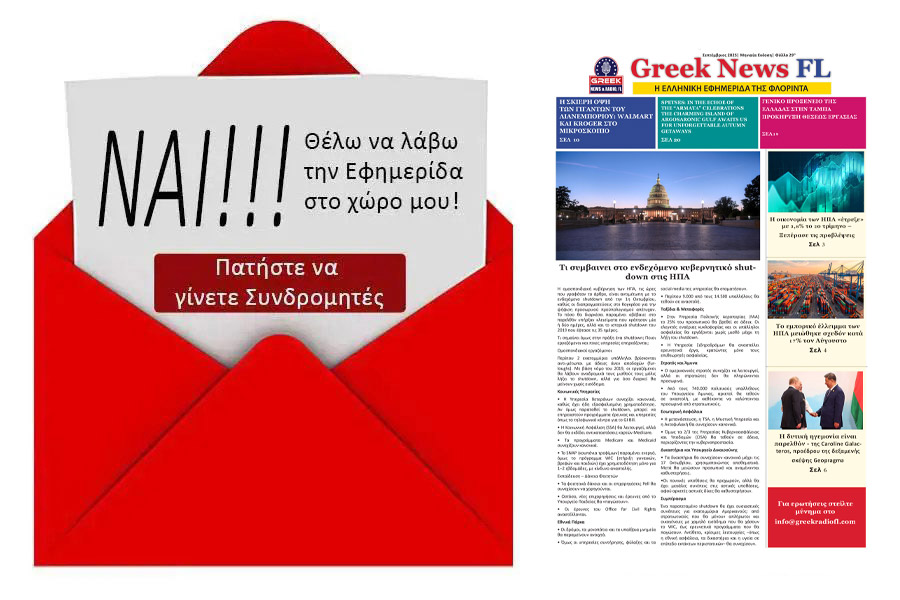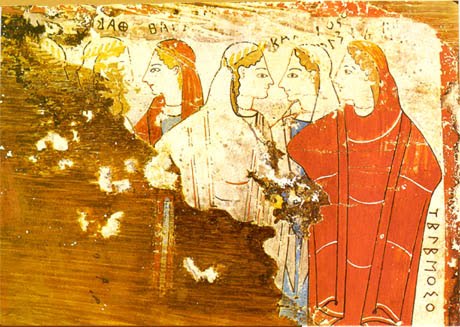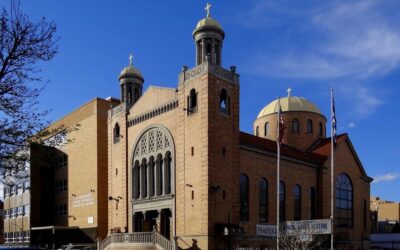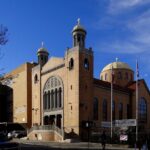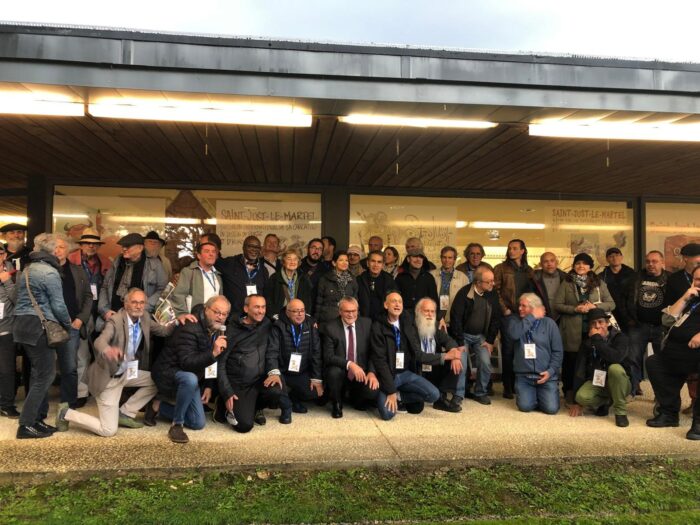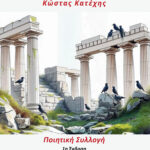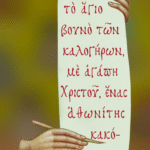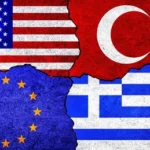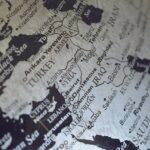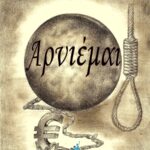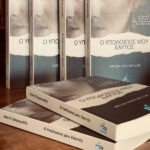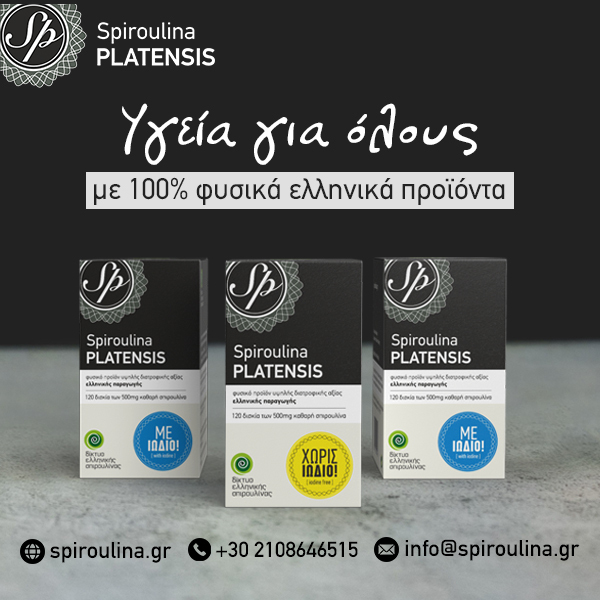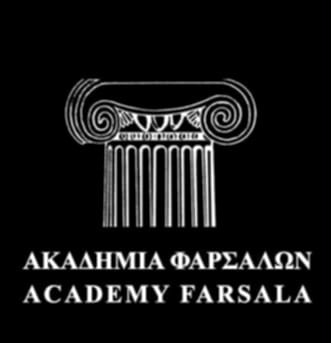Η συνέχεια του άρθρου
Helena the painter is included in an anecdotal list (καταλόγος) of famous women named Helena, also including Helen of Troy, which contains several fabulous tales. The reference to her consists of only three or four sentences (depending on how a translator chooses to punctuate it). Ptolemy may have written more about her that Photios decided to omit as surplus to the requirements of his brief summary. We are not told when or where she is supposed to have lived or worked, only that she was the daughter (θυγάτηρ) of Timonos of Egypt and painted the Battle of Issos (333 BC) when “she was at the summit of her talent” [4], and that during the reign of Emperor Vespasian (69-79 AD) the picture was exhibited in the Temple of Peace (Templum Pacis, also known as the Forum of Vespasian, Forum Vespasiani) in Rome.
Photios’ extract does not state, as has been claimed, that her father Timonos, who is otherwise unknown, was a painter or her teacher. [5]
“Καὶ ἡ ζωγράφος Ἑλένη τοῦ καταλόγου ἐστὶ τούτου, Τίμωνος τοῦ Αἰγυπτίου θυγάτηρ, ἥτις τὴν ἐν Ἰσσῷ μάχην, ἐν ἐκείνοις ἀκμάζουσα τοῖς χρόνοις, ἔγραψε· καὶ ἐν τῷ τῆς Εἰρήνης τεμένει ἐπὶ Οὐεσπασιανοῦ ἀνέκειτο ἡ γραφή.”
“And Helen the female painter also belongs to the list. She was the daughter of Timon the Egyptian. She painted the Battle of Issos at the time when she was at the height of her powers. The picture was displayed in the Temple of Peace under Vespasian.” [see note 3]According to other translations, she “painted the Battle of Issus about the time of its occurrence” [6], which strengthens arguments that she lived in the 4th century BC and was a contemporary of Alexander the Great.
This is one of three paintings some modern scholars think may have been the model for the “Alexander Mosaic” (125-120 BC) found at Pompeii. The other two contenders are works attributed by Pliny the Elder to Philoxenos of Eretria and Aristeides of Thebes. However, since none of these paintings have survived, and information concerning their contents and compositions is negligible, theories remain purely conjectural.
The large floor mosaic shows a battle scene in which Alexander charges on horseback towards the chariot of the fear-stricken Darius III, who appears to be retreating in panic. According to ancient accounts, at both the Battle of Issos (or Issus) in 333 BC and the Battle of Gaugamela in 331 BC Alexander came close to the Persian king who fled the field, which led to the retreat of the Persian army. Despite various theories, it is not known which battle the mosaic depicts.
Pliny the Elder did not specify which battles with Persians were painted by Philoxenos or Aristeides, which may indicate that by his time this information was no longer available. That Ptolemy Hephaistion is said by Photios to have written that Helena painted the Battle of Issos is no proof of a connection to the mosaic. The battles of Alexander were evidently popular subjects in the Hellenistic and Roman periods, and there may well have been other pictures of this type about which we know nothing. [7]
Helena is not mentioned by Pliny the Elder, and she does not appear in his short list of female painters:
“There have been some female painters also. Timarete, the daughter of Micon, painted a Diana at Ephesus, one of the very oldest panel paintings known.
Irene, daughter and pupil of the artist Cratinus, painted a figure of a girl, now at Eleusis, a Calypso, an Aged Man, the juggler Theodorus, and Alcisthenes the dancer.
Aristarete, daughter and pupil of Nearchus, painted an Aesculapius [Asklepios].
Iaia of Cyzicus, who always remained single, painted at Rome, in the youth of M. Varro, both with the brush, and with the graver, upon ivory, her subjects being female portraits mostly. At Naples, there is a large picture by her, the portrait of an Old Woman; as also a portrait of herself, taken by the aid of a mirror. There was no painter superior to her for expedition; while at the same time her artistic skill was such, that her works sold at much higher prices than those of the most celebrated portrait painters of her day, Sopolis namely, and Dionysius, with whose pictures our galleries are filled.
One Olympias painted also, but nothing is known relative to her, except that she had Autobulus for a pupil.”
Pliny the Elder, Natural history, Book 35, chapter 40. At Perseus Digital Library.
As with other ancient authors, Pliny’s testimony on many subjects has been continually questioned by scholars, not the least his attribution of ancient Greek works to particular artists. Much of his information is considered to be second or third hand and questionable on a number of grounds.
In the case of Ptolemy Hephaistion we do not even have his own words, just the summary by Photios, who is thought to have written Bibliotheka in a short time. Photios made it clear that he considered the content of Ptolemy’s New History to be full of “extraordinary and badly imagined information”, absurdities and “trivial fables” (fabulous stories), and that “the majority of his stories … are free of things impossible to believe”. He describes Ptolemy himself as “a somewhat credulous spirit, inclined to boastfulness”, who had critics even in his own time. “He attacks some of his detractors whom he accuses of having approached the subject in an unhealthy way”, and, “In treating each of these subjects, he pretends that his detractors have committed errors when they learned them and passed them on”. [note 3] Photios may have summarized the work in a way which substantiated his opinion; he was, after all, a Christian prelate reviewing the work of a pagan author on pagan subjects seven centuries after it was written.
If the New History was an epic poem rather than a prose treatise, it may be understandable that Ptolemy used the poetic conceit of freely mixing mythographical and historiographical references and allusions throughout the work. However, many of the items of information are not corroborated by other sources, and we do not know how much he took from other authors or invented himself. This treatment of the data, at least as presented by Photios, makes much of the supposedly historical information questionable. In this case, it seems reasonable to question his account of Helena and her Battle of Issos, and ask whether either ever existed.
There is no doubt that throughout history female artists have received little attention from authors and critics, and that many have had to struggle in order practise their art or gain any kind of reputation for their work. However, when considering the possibility that the “Alexander Mosaic” may be a copy of Helena’s Battle of Issos, it seems a more than a little biased in the other direction to claim that “the attribution is disputed because of Helena’s gender”. There is simply no evidence that the mosaic is a reproduction of a painting, known or unknown, by any artist, even Helena, Philoxenos or Aristeides.
See also:
A discussion of the relationship between ancient Greek paintings and mosaics and their authorship on the Dioskourides of Samos page.
A discussion of reports by ancient authors on the works of artists on the Aetion of Amphipolis page.
Helena
of Egypt Notes, references and links
- Ptolemaios Chennos in the Suda
The Suda (Σοῦδα) is a Byzantine encyclopedia written in Greek in the 10th – 11th centuries AD (probably around 970 AD). Although the information in the Suda is largely culled from the works of ancient authors, many now lost, its reliability is often considered questionable (see for example, Panyassis of Halicarnassus).
“Ptolemaios of Alexandria. Grammarian. The son of Hephaestion. He lived under the emperors Trajan and Hadrian; he was called Chennus. [He wrote] On astonishing stories; Sphinx (a historical drama); Anthomerus (a poem in 24 rhapsodies); and certain other works.”
Πτολεμαῖος, pi, 3037, in Greek with an English translation at Suda On Line.
As ever, there has been speculation and debate about the interpretation of even this short text, including over whether Ptolemaios may have been the father or teacher of Hephaistion rather than his son (ὁ τοῦ Ἡφαιστίωνος in the Suda, Πτολεμαίου τοῦ Ἡφαιστίωνος in Photios).
Even the meaning of Ptolemy’s surname or nickname Chennos (Χέννος) is uncertain. It is usually translated as Quail, although it has been suggested that it may have been Xenos (Χένος), Stranger or Foreigner. The epiphet Quail may perhaps have been due to one of his typically peculiar stories mentioned by Photios:
“He says that the person in the first book of Herodotus’ Histories who was killed by Adrastus, son of Gordias, was called Agathon and that he was killed in the course of a quarrel about a quail.”
Photius of Constantinople, The Bibliotheca, Codex 190, Ptolemy Chennus, New History. At The Tertullian Project by Roger Pearse. [see note 3]
It is thought that his epic poem Περὶ παραδόξου ἱστορίας (On paradoxical/incredible/astonishing histories) may be the New History epitomized by Photios.
Συνεχιζεται
photo https://art-e-painting.blogspot.com/2012/04/blog-post_16.html

